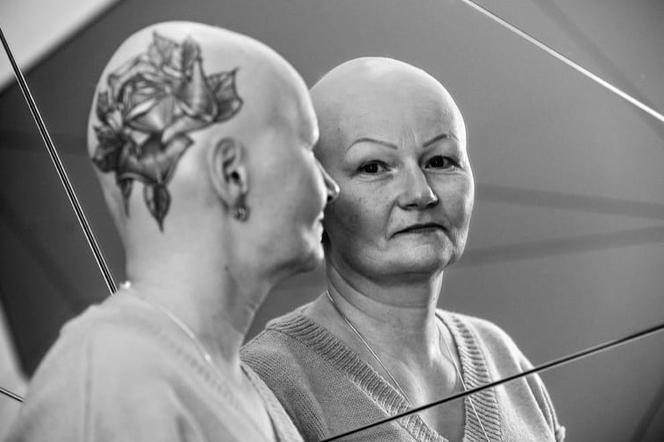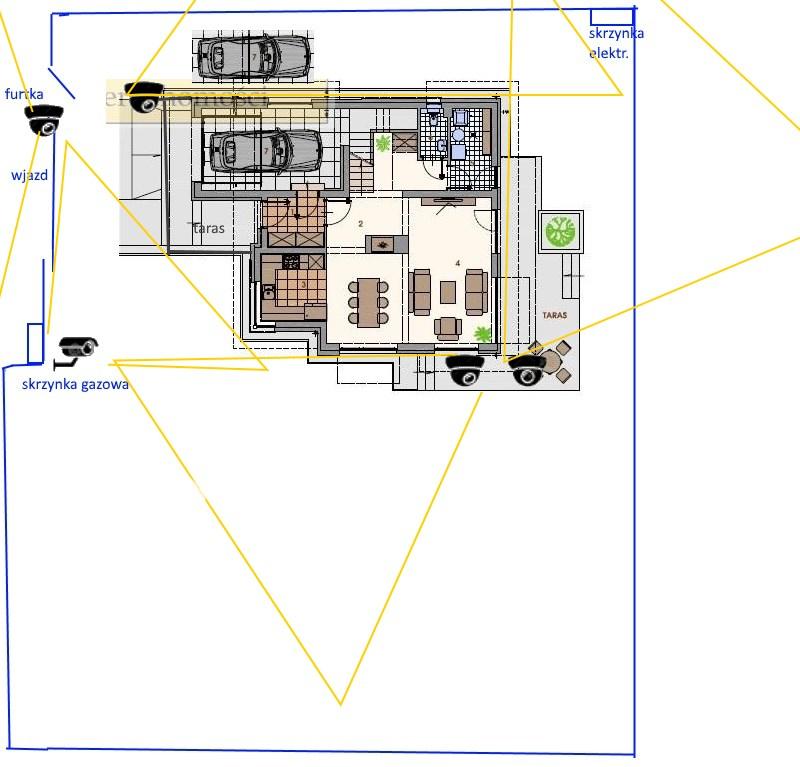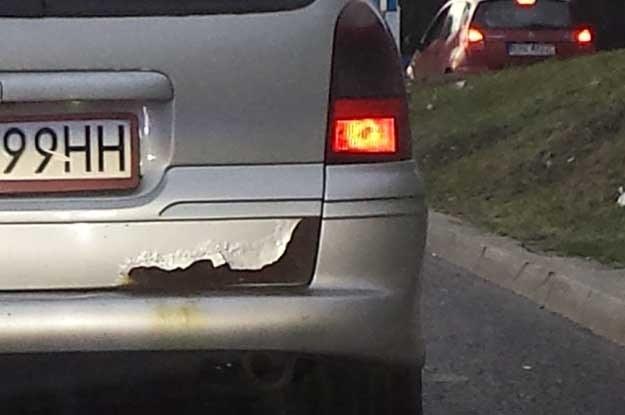Tenda CP6 review - an effective and cheap surveillance camera
The prices of home surveillance cameras start from about PLN 100 - sometimes they do not even exceed this magical limit. The Tenda CP6, the model I will take to the workshop today, costs a little more, about PLN 140 (and sometimes it is in promotions for PLN 120). Still, it offers 2K image capture, rotatable design, two-way communication and much more. Let's see if it is really as interesting as it looks on paper.
Design
In terms of design, the Tenda CP6 is a typical representative of home surveillance cameras - it actually looks like most of this type of equipment. You can judge for yourself whether it is bad or good. However, do not be fooled by the common appearance - this one hides several curiosities and possibilities.
The first, and probably the most important, is a rotating structure that allows the camera to record horizontally at 355 °. What about the riser? It's worse - 155 °, but still enough - 90 ° up and 65 ° down.
Turning the camera over, we see another advantage - the LAN port, the presence of which will be appreciated primarily by users without WiFi access or having problems with wireless Internet, which, for example, often disconnects, interrupts, etc. A wired cable connection is always more stable and the Tenda CP6 makes it possible.
Right next to the RJ45 there is a charging socket (the cable included in the sales kit is long - 3 meters - so there shouldn't be a problem with the arrangement of the camera in the selected room). On the other hand, there is also a loudspeaker above the connectors, because the device offers two-way communication - which can be useful in many usage scenarios (caring for a child or an elderly person, saying a few words to a courier or an employee, etc.).
Perhaps you will ask where we put the microSD card. This is actually a good question, because looking at the camera it is difficult to guess - you have to turn the rotating part of the structure upwards so that you can see the memory card slot.
With this huge advantage, you must be aware that the Tenda C6 is a camera made of plastic, but it's hard to expect anything more at this price. Additionally, it is a camera typical for indoor use - it is not sealed in any way, it does not meet any IP standard; it is definitely worth remembering.
The dimensions of the camera are 10.3 x 8.8 x 8.8 cm. It can be placed on a flat surface or attached to the ceiling - the image in the app can be rotated 180 °.
Getting started and cloud movie storage
Configuration mainly comes down to two steps - connecting the camera to the power supply and downloading the TDSEE application (available for Android and iOS). Then you need to associate the camera with the application using the QR code and enter the password for the WiFi network - unfortunately, only 2.4 GHz networks are supported (no 5 GHz). I only set up the camera this way, but I expect the same thing with a wired connection.
If we want to keep recordings in the memory of the microSD card, apart from inserting it into the camera, we do not have to do anything else. However, you can also use the storage of recordings in the cloud - unfortunately - paid (there is no basic free plan). Such pleasure costs $ 4.99 a month. Then the recordings from the last 7 days are saved in the cloud and we have constant access to them.
If we want access to 30 days or simply extend the subscription time for the service, we have to pay more:
Due to the camera tests, I decided on the most basic cloud plan to be able to form an opinion on how it works. And it's hard to say anything bad about it. All recordings are actually available up to 7 days back, and we can download them to the phone's internal memory at any time.
Maybe it is a pity that it is not possible to get to the cloud from a computer / laptop - if even a browser version was available, it would be perfect.
The capabilities of the Tenda CP6 camera and the quality of the recordings
The primary use of the Tenda CP6 is, of course, the monitored whatever is within the range of the camera lens. The 2K resolution (2304 x 1296 pixels) on paper looks better than Full HD (1920 × 1080 pixels), and how does this translate into the actual capabilities of the camera?
First of all, you need to know that the matrix has 3 megapixels, and video materials are recorded in 20 frames per second. What do the recordings from it look like?
It just so happens that at the same time I had the opportunity to test two home surveillance cameras - Tenda CP6 and realme Smart Cam 360 °. The second one has a less common appearance (I would even say more modern and designer), records in lower quality (Full HD) and costs about PLN 30-50 more (depending on ongoing promotions).
Interestingly, however, it is the Tenda CP6, which may look worse, boasts a slightly higher quality of recordings, an Ethernet port and a slightly wider viewing angle. Anyway, see a few examples that allow you to compare the quality of the recorded image from both cameras (the first shot is always from the Tenda CP6, the second from realme):
The camera also allows two-way communication. Tenda CP6 is equipped with a microphone, so we can hear what is happening in the room in which it is located. However, you must be aware that there is a sound delay of about a second and that its quality is very average - if the sound is loud and comes from close range, it is OK, if it is further away - you can hear it as if it was passing through a well.
The camera also has a loudspeaker (here the intercom function in the application is useful), which allows you to talk to the person who is near the camera - it does not have to be an intruder, but a child or an elderly person who you want to monitor. Importantly, access to the camera can be made available to other household members.
I tested the camera in the medium and high sensitivity mode and I didn't notice much of a difference - in both it was just as good at detecting the appearance of a person in the frame.
The alarm itself can appear both in the form of a notification on the phone, but also as an audible signal played by the camera (quite loud) and as a flashing light.
The camera can be used in a total of three modes - static, where it tracks only the image within its range, active, where it rotates to track human movements when motion is detected (although it moves often randomly ...) and in the form of a patrol. Patrol is a feature that causes the camera to rotate 360 ° continuously for two hours after it is turned on.
What can be irritating? Two things for me. The first is the aforementioned human tracking after motion detection - when I go right, the camera can turn left, if I go left, it turns right; I have the impression that it still needs to be refined. The second thing, however, is motion detection - the camera can classify a change in lighting as movement - e.g. lighting up or the sun coming out from behind the clouds.
And if someone is an esthete, he must also take into account that he will have to wipe the black part of the camera housing quite often - it even loves to collect dust.
Summary
Tenda CP6 is a home surveillance camera that surprised me with its price - for little money it offers very good quality of the recorded image both during the day and at night. Maybe it looks common (in fact, like most of this type of equipment), but it works perfectly in everyday life.
I have a recommendation for the Tenda CP6 - it's a solid camera, especially since it can be pulled out for a little over a hundred.
Tenda CP6 review - an effective and cheap surveillance camera Conclusions Advantages of recording quality Ethernet port trouble-free operation from the application level Price Disadvantage Not even a basic free cloud plan quality of the microphone in camera narrow angle of view (acceptable at this price) black elements love to collect dust9 Rating







